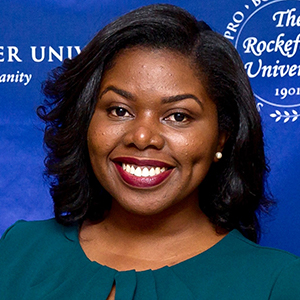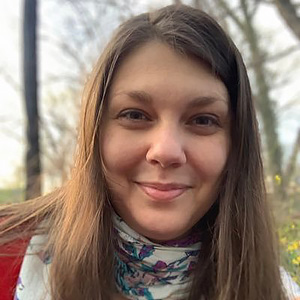
Community Day broadens impact of DiscoverBMB
“The value of engaging my students with a professional society was getting to see where and what their future could look like if they pursue research as a career option. Community Day was a great opportunity for them to see people who look like them doing science.” — Tim Renz, Foster High School
Every year, the American Society for Biochemistry and Molecular Biology takes its annual meeting to a new city. In 2024, that city will be San Antonio. After the conference, we’ll travel back to our homes and workplaces. But, how can we leave a lasting impact on the community where we’ve met? How can we share the joys of science, technology, engineering and mathematics with the upcoming generation of local scientists, especially those historically underrepresented in the field?
In planning for DiscoverBMB 2023 in Seattle, the ASBMB Science Outreach and Communication Committee set out to address these questions. The SOCC members have all engaged in community outreach, and we wanted to use our expertise to help local students and educators experience the society’s annual conference. We hoped to give STEM-curious students, particularly those who are members of groups that are underrepresented in the sciences or from underresourced communities, an opportunity to experience real-life science. Out of this conversation came the idea for our first Community Day.
As we plan for Community Day 2024, we want to tell you how our first event came together — and how it will evolve for San Antonio. The goal was, and remains, to provide an inclusive and fun experience that exposes students to a scientific conference where they engage with scientists and learn about what career opportunities lie ahead.
To achieve this goal, we needed to identify our audience, determine activities and connect with collaborators. Five months before Discover BMB 2023, planning was in full swing.
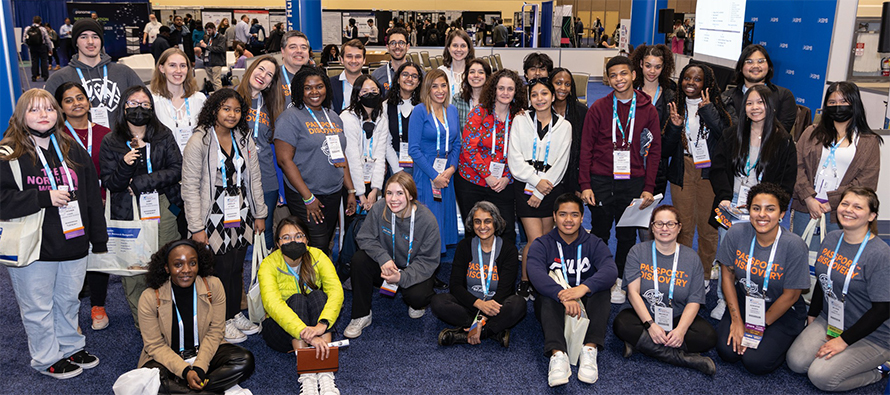
Participants
We decided our target audience would be high school students aged 15-18 with at least half of these students coming from underresourced or underserved schools and communities. We used our network to contact organizations in Seattle that engage with high schools and nonprofits. One contact led to another, and we identified three partner groups: Foster High School, the Fred Hutchinson Cancer Center and the STEM Pathways Innovation Network.
When we asked the educators and mentors of each group about accommodations, needs and barriers to participation, they mentioned food — we were taking students away from school-provided lunches — and transportation — some students would need transportation to the conference.
A working group within our committee identified 15 ASBMB member volunteers and conference attendees to help with Community Day. We told them about our goals and needs, prepared them to engage with our chosen age group and equipped them with tools to help us run the activities.
On the day
On March 28, SOCC members and staff welcomed students and their mentors at the front entrance of the Seattle Convention Center.
The 30 participants came from 11 cities in the Seattle area. The ASBMB funded their travel to and from the conference by public transit, charter bus or car. Many came from underresourced communities — between 60% and 70% of the students were from groups underrepresented in the sciences, and roughly 20% were from schools receiving federal funds to support low-income students’ education.
In a meeting room, we had opening remarks, introduced one another and provided lunch. Everyone received a personalized conference badge, a “Passport to Discovery” booklet to document their experience and a Community Day T-shirt. The organizers also wore the T-shirts.
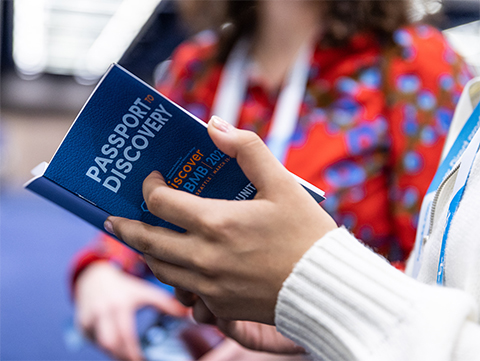
Science talks
A highlight of any conference is scientific talks, so we integrated the committee’s annual Science in a Flash flash talk competition into Community Day programming.
Parmvir Bahia, SOCC member and lead organizer and moderator of Science in a Flash, said, “This is a great opportunity for students to not only hear an accessible presentation of ongoing science work but also to participate in the judging of a winner that day.”
Excitement and a dash of anticipation were in the air as participants entered the bustling exhibit hall to hear and judge the flash talks. Equipped with a rubric, they voted for the most impactful talk, which received the Student Choice Award.
Regina Wu of Fred Hutchinson Cancer Center, said, “The students really loved being able to vote for the best flash talk. Having speakers from lots of different backgrounds was great.”
Amber Inwood, a mentor for the STEM Pathways Innovations Network, said, “The students seemed to rise to the occasion of being a judge because it gave them a sense that they belonged.”
This feedback reinforced our belief that we were providing an inclusive environment.
Networking and engaging
We held a Meet a Scientist panel session to connect the students with eight scientists working in diverse fields and of diverse backgrounds, many of whom work in the Seattle area. Adriana Norris, an SOCC member, organized and moderated the session.
“A goal of this panel is to provide students with a chance to speak with scientists and ASBMB members of different career stages and backgrounds and ask them questions about their career paths,” Norris said. “We hope that students feel inspired and can see themselves in their personal journeys.”
After the event, Tim Renz of Foster High School said the winner of “the unofficial ‘tell me the best part of the day’ survey on the bus ride home was overwhelmingly the scientist panel.”
The panelists said they appreciated connecting with students who are preparing for the next steps in their academic journey; they were impressed by the students’ questions and offered their contact information to stay in touch afterward.
We also collaborated with three exhibitors — Echelon Biosciences, Gene Tools and Vector Builders — who showcased their innovative science and provided conference goodies.
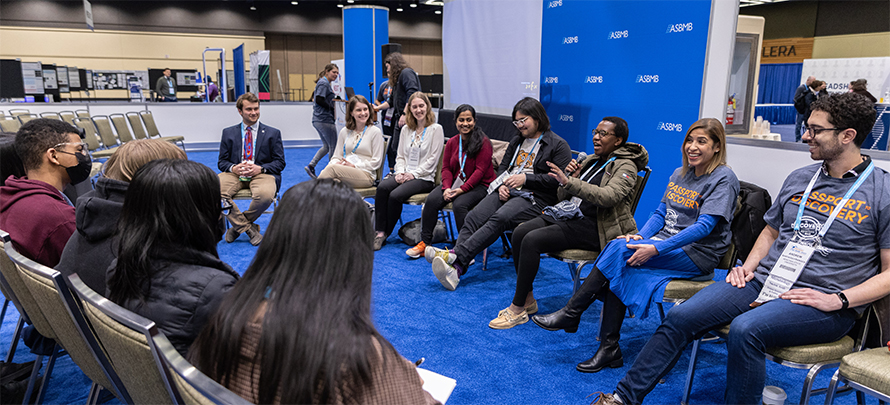
Interactive demos
Our committee came up with three hands-on activities for the students: “Escape the Cell,” a learning resource provided by RockEDU Online; a “Discover the Unknown” protein assay activity; and a “Who dun it?” forensic blood-typing activity from a kit provided by Edvotek.
“Escape the Cell” participants converted DNA to RNA to proteins using art supplies, emphasizing the central dogma of molecular biology: the theory of gene expression. This friendly competition required teamwork. We heard students say, “Oh let’s do it again, and I can escape faster next time.”
Conversations about what’s happening inside our cells contributed to memorable “aha moments” where students connected molecular processes to the biology of their own bodies. One student said they wore their protein bracelet home and used it to explain central dogma to their little sister, emphasizing the importance of understanding insulin.
The next station linked to the first as students worked to “Determine the Unknown” protein concentration using the Lowry protein assay method. Protein assays are widely used to determine, for example, the amount of protein in a person’s blood serum. SOCC member Michele Vitolo organized and led the workshop.
“Because these methods are used to investigate diseases or an individual's health, we felt that it was a great link to showcase how basic scientific research applies to everyday life,” Vitolo said. “Students are able to visualize the presence and the amount of a protein in a sample through a change in color gradient and seemed to absolutely love learning and practicing to pipette — they couldn’t get enough of it.”
At our “Whodunit?” station, students became forensic scientists and analyzed blood samples at a faux crime scene. They used blood-surface antigens to determine the blood type of collected samples. SOCC member Mike Wolyniak organized and led the workshop.
“As a basic science researcher, I get excited about answering fundamental questions of life processes, especially when it leads to better ways to predict or prevent disease,” Wolyniak said. “This was a great way to share that excitement with students and apply their knowledge of biochemistry in a real-life scenario.”
Students and educators then browsed posters, engaged with exhibitors and participated in an ice cream social — a great addition to the day. As the afternoon ended, we said our goodbyes and asked all the students to fill out a post-event evaluation survey.
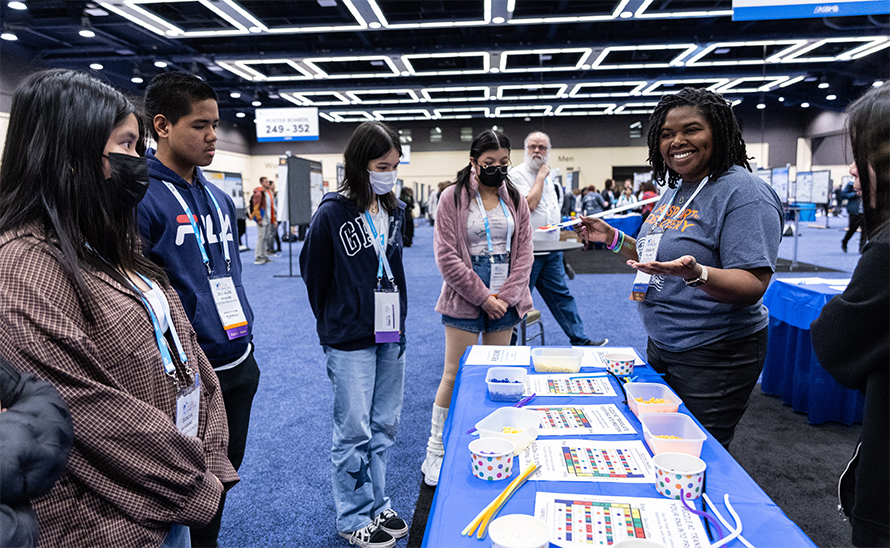
Outcomes
As organizers, we aimed to learn whether we met our goals and how to plan for next year. Our pre- and postevent surveys showed how familiar the students were with career options in science and their perception of science and scientists. Students also shared their favorite part of the day and what changes they’d like to see in future events.
Our participants were already excited about science, we learned, but they lacked knowledge of career options and pathways. After the event, we saw a significant increase in how likely they were to pursue a science career.
Through an online open-response feedback form, we asked the educators and mentors what worked well, what was missing and what value they see in engaging their students with a professional society.
“Our students talked about feeling like real scientists and imagining what it would be like to be a graduate student or researcher attending the conference,” Regina Wu wrote. “They also felt like their opinion mattered especially because of the flash talks and being in the center of the conference hall for the career panel.”
What did we learn?
Feedback from the educators and students has allowed us to optimize our planning for Community Day 2024.
Make more time for talking to scientists- Students wanted more time and less noise when talking with scientists, and they asked for more hands-on demonstrations and more time allocated to the demos. For the 2024 event, we hope to reserve a more intimate space for Meet a Scientist and offer more one-on-one mentoring. We’ll structure the hands-on demonstrations to give everyone more time and space to engage.
- Tim Renz told us, “Flip the crime scene scenarios into exoneration scenarios. We now have the technology to be able to exonerate people, especially black and brown people, who have been wrongly convicted.”The SOCC aims to advocate for equitable and diverse outreach practices, and we plan to expand on this effort.
- Exploring the poster sessions was organic, and the students and educators enjoyed it. In the future, however, we hope to find more meaningful ways to engage. One educator suggested a scavenger hunt so students could get to know some of the work and projects presented at the conference.
- Accommodating needs is important. We learned that some educators must identify their own substitute teachers and associated costs when they leave school for an event like Community Day. We didn’t anticipate this barrier, but we adapted and we plan to ask about it in the future.
- In 2023, we asked a number of members to volunteer, especially in the Meet a Scientist panel, but the event was mostly committee driven. This year, we’d love to expand our collaborative efforts to include Student Chapters — the ASBMB members closest in age to our high school participants.
Looking ahead
In addition to assessing feedback from our guests, the committee discussed how we thought the 2023 event went. We defined three takeaways for planning 2024:
- Engage conference attendees and build more connections with members about Community Day;
- Provide more representation for students from careers outside academia; and
- Reserve space that allows for more direct communication and engagement with students.
We hope to see you at our Discover BMB 2024 Community Day event in San Antonio. If you’re interested in volunteering your time, please email outreach@asbmb.org by Feb. 23.
And we’d love to hear about your science outreach initiatives. Visit asbmb.org/education/science-outreach to learn more.
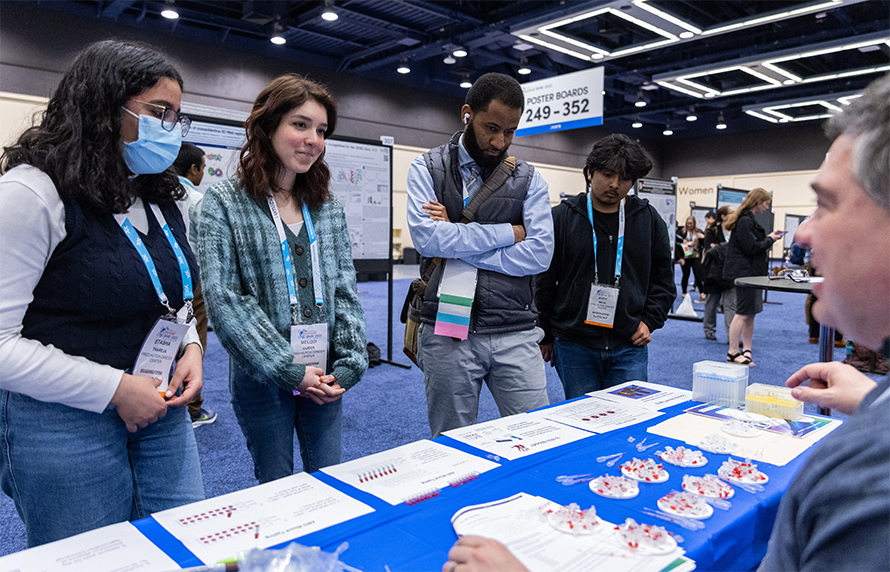
Enjoy reading ASBMB Today?
Become a member to receive the print edition four times a year and the digital edition monthly.
Learn moreGet the latest from ASBMB Today
Enter your email address, and we’ll send you a weekly email with recent articles, interviews and more.
Latest in Education
Education highlights or most popular articles

Summer research spotlight
The 2025 Undergraduate Research Award recipients share results and insights from their lab experiences.

Debugging my code and teaching with ChatGPT
AI tools like ChatGPT have changed the way an assistant professor teaches and does research. But, he asserts that real growth still comes from struggle, and educators must help students use AI wisely — as scaffolds, not shortcuts.

How AlphaFold transformed my classroom into a research lab
A high school science teacher reflects on how AI-integrated technologies help her students ponder realistic research questions with hands-on learning.

Writing with AI turns chaos into clarity
Associate professor shares how generative AI, used as a creative whiteboard, helps scientists refine ideas, structure complexity and sharpen clarity — transforming the messy process of discovery into compelling science writing.
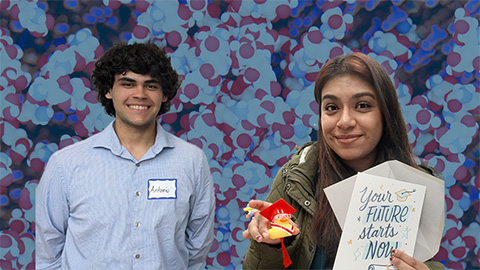
How undergrad research catalyzes scientific careers
Undergraduate research doesn’t just teach lab skills, it transforms scientists. For Antonio Rivera and Julissa Cruz–Bautista, joining a lab became a turning point, fostering critical thinking, persistence and research identity.

Talk nerdy to me: Communicating research that matters
Master science communication: learn to engage the public, work with the press and explore new careers — from consulting to media — through ASBMB’s Art of Science Communication course.

